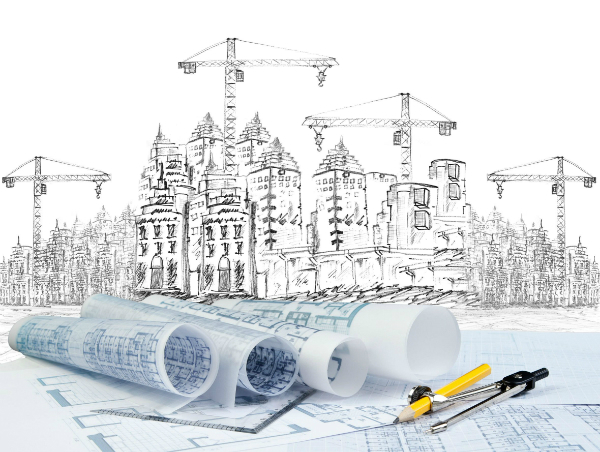Industrialised building system, or IBS homes, are a trending topic in Malaysia, and supporters argue they could be building a new future for housing in the country – one block at a time. So what’s this IBS system?
The IBS system is a technical way of describing the construction of a building by fitting together preconstructed parts made in a factory. Think of it like, a very expensive set of Lego!
The image that often comes to mind here is this idea of fully formed prefab homes, as if you take it out of a box and put it up right where you want it. Nope.
It’s good to recognise that IBS isn’t just about stamping out single complete homes, but creating better efficiency.
This is done by constructing part – and sometimes (but less often) all – of a housing development in an organised, factory-built way.
Whether you say IBS, meaning to call it industrialised building system, prefabricated or prefab homes, the ultimate result is the same.
It’s a house which is built in sections manufactured from designated specifications within a factory, and then assembled at the point of construction. This includes walls or ceilings, or entire units.
That’s why it not simply just a question of how much does a prefab house in Malaysia cost – the truth is, prefab elements are often just one component of an overall development.
While uptake in Malaysia is slowly growing, IBS has seen widespread adoption in other parts of the world.
Europe is a particularly mature market, where global leader Sweden has prefabricated elements in more than 80% of detached homes.
Rapid urbanisation in China is leading this to becoming an increasingly important, and affordable, solution throughout the Asia Pacific region too.
That aspect of affordability is an important part of the prefab homes argument. We all know that affordability is a big question in Malaysia’s real estate industry, with the government championing a number of measures such:
- Home Ownership Campaign
- Youth Housing Scheme
- Other affordability initiatives
- Measures announced in Budget 2020 to help support access to affordable housing.
What Does The IBS Construction Method Mean For Malaysia?
The Construction Industry Development Board (CIDB) have been promoting the use of IBS for years, arguing that it will:
- Improve quality
- Reduce costs
- Save the need for foreign labour
- Accelerate construction timelines
- Simplify on-site management and safety
- Reduce the environmental impact of the construction industry
That’s quite the list of exciting benefits! Of course the cheaper it is to build, the more affordable a home should be for you to buy too.
IBS in Malaysia is rated using a scorecard, with which puts emphasis on use of prefabricated and standardised components, as part of a repeatable and potentially modular process.
This IBS score rates a property up to a maximum of 100 points. Therefore, the higher the score, the more prefab elements a housing development has used.
The CIDB aims to encourage uptake of IBS by providing a levy exemption to properties which utilise over 50% of Industrialised Building System components.
The levy is otherwise charged at 0.125% of total construction work contracts that exceed RM500,000.

Private sector adoption has seen some impressive growth in recent years, with use of IBS in private developments rising from 14% just four years ago to around 35% in 2019.
The CIDB has targeted 50% adoption of IBS in private developments by the end of 2020. So if it’s all so great, what’s the hold up? The answer is also cost.
While IBS technology offers a whole range of benefits in the long run, in the short run it does present some significant investment barriers to start.
Building a factory to churn out pieces of buildings is no small commitment, and importing prefab building materials on an industrial scale reduces both the environmental and economic benefits, as well as potentially undermining the local construction industry.
High-rise apartments and condos in Malaysia are more likely to benefit from this expansion, as they create far more accessible economies of scale than unique landed properties.
Since high-rises include multiple identical units connected as part of a large structure, it’s easier to create a standardised template for components to make that giant Lego apartment block of your dreams.
The First Prefabricated Home In Malaysia
Industrialised building systems may seem like a hot new topic, but Malaysia has been piloting the possibility for over four decades.
The first such project took place on Jalan Pekeliling in Kuala Lumpur beginning in 1964, creating seven blocks of 17-storey flats, alongside four blocks of four-storey flats, as well as 40-storey lots of shops.
They were widely known as the Tunku Abdul Rahman public flats before their demolition in 2014.
The second pilot project was launched in Penang in 1965, creating two more developments of residential flats at Jalan Rifle Range.
This was not only the first prefab construction in Penang, but the first ever low-cost high-rise housing project undertaken in the state.
Constructing Examples Of IBS In Malaysia Today
If 35% of private developments in Malaysia are utilising IBS components, where are they all hiding?
Well the good thing to know about IBS is it is designed and developed to look like a regular home. The whole Lego thing we’ve been talking about is a bit of a distraction if we’re being honest.
Top developers in Malaysia are already using IBS to help improve construction time and quality in major developments.
The 714-unit Rumah Selangorku Jade Hills development in Kajang was built using IBS, with developer Gamuda Land revealing that construction time was cut from three to two years thanks to its use.
Another project constructed under this system is the Selangor State Development Corporation (PKNS) 864-unit affordable housing project in Cyber Valley.
That’s a great example of how IBS is already showing the potential to support affordable home growth in Malaysia.

SP Setia is another major developer employing IBS in its developments, creating an estimated 25,000 homes using this method by the end of 2019.
It’s also been employed in major commercial projects such as construction of Setia City Mall, the ACC and Specialist Centre at Hospital Kuala Lumpur, and AIMST University in Sungai Petani, revealing opportunities beyond just residential developments.
Pros And Cons Of Prefabricated Homes
These IBS developments are looking like a big win for the industry, and that means a big win for home buyers too, but is it all really that simple?
Let’s take a quick look at the pros and cons of IBS homes in Malaysia:
Pros |
Cons |
|
Can help reduce cost through economies of scale, helping support affordable housing.
|
Can be expensive to develop manufacturing facilities initially.
|
|
Large-scale, precision production of housing units and components helps reduce the total environmental burden of construction.
|
IBS homes can limit renovation opportunities due to the nature of construction.
|
|
Speeds up development process, contributing to cost savings while also reducing wait time for new housing.
|
Industry experience and access to skilled workers for IBS homes can be limited, but is developing.
|
|
Reduced need for labour which frees up workers, allowing developers to undertake multiple constructions simultaneously.
|
High-volume production required to ensure IBS remains economically beneficial.
|
|
Quality of homes is consistent and reliable, helping ensure homes with a long lifespan.
|
|
|
Growth in adoption will accelerate economies of scale, meaning greater savings can be unlocked in future.
|
|
Does this all sound like a prefabricated success, or something that’ll kick off the future of homes in Malaysia? If you aren’t too keen on this type of property, and prefer something a little more old-school, here’s a very informative step-by-step guide on How To Buy A Subsale Property in Malaysia!
Keep Track of New Launches
Visit our new launches page to find the new launch project of your dreams and submit an enquiry today.

Disclaimer: The information is provided for general information only. PropertyGuru International (Malaysia) Sdn Bhd makes no representations or warranties in relation to the information, including but not limited to any representation or warranty as to the fitness for any particular purpose of the information to the fullest extent permitted by law. While every effort has been made to ensure that the information provided in this article is accurate, reliable, and complete as of the time of writing, the information provided in this article should not be relied upon to make any financial, investment, real estate or legal decisions. Additionally, the information should not substitute advice from a trained professional who can take into account your personal facts and circumstances, and we accept no liability if you use the information to form decisions.






